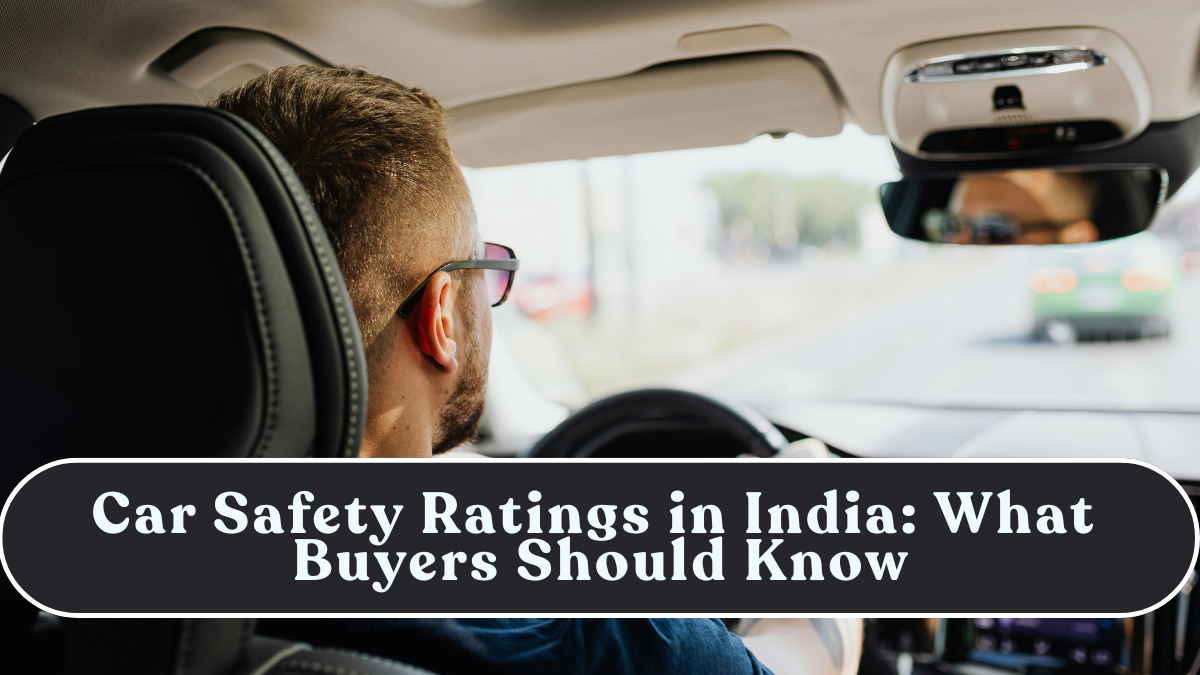For years, Indian car buyers prioritized mileage and price over safety. But 2025 marks a major shift — safety is finally in the driver’s seat. Thanks to the introduction of Bharat NCAP, India now has its own crash-test and safety rating system, allowing consumers to make informed decisions about vehicle protection.

What Is Bharat NCAP?
Bharat New Car Assessment Program (Bharat NCAP) is India’s official car safety rating system launched by the Ministry of Road Transport and Highways (MoRTH). It evaluates how well vehicles protect occupants during a crash and assigns a 1–5 star rating for both adult and child safety.
Key objectives include:
-
Encouraging automakers to prioritize safety over cost.
-
Aligning Indian standards with global NCAP protocols.
-
Helping buyers identify safer cars through transparent, data-driven ratings.
How Safety Ratings Are Calculated
The Bharat NCAP uses several parameters to test each car:
-
Frontal Offset Crash Test (64 km/h) — Measures driver and passenger injury risk.
-
Side Impact Test (50 km/h) — Assesses protection from collisions at the side doors.
-
Pedestrian Safety Test — Evaluates injury risk to pedestrians during impact.
-
Electronic Stability Control (ESC) — Checks car stability under sudden maneuvers.
-
Seatbelt Reminders and Airbags — Minimum six airbags now mandated in most cars.
Scores are converted into star ratings:
-
5 stars: Excellent occupant protection
-
4 stars: Good safety standards
-
3 stars: Moderate safety, acceptable for basic protection
-
1–2 stars: Poor structural safety
Top-Rated Cars Under Bharat NCAP (2025)
| Model | Adult Safety Rating | Child Safety Rating | Airbags |
|---|---|---|---|
| Tata Harrier | 5 stars | 5 stars | 6 |
| Mahindra Scorpio-N | 5 stars | 3 stars | 6 |
| Hyundai Verna | 5 stars | 5 stars | 6 |
| Volkswagen Virtus | 5 stars | 5 stars | 6 |
| Tata Punch EV | 5 stars | 4 stars | 6 |
These results have increased buyer confidence in Indian-made vehicles, many of which now meet or exceed international safety standards.
Why Safety Ratings Matter More Than Ever
-
Rising Road Fatalities:
India accounts for nearly 11% of global road deaths, making safer cars a national necessity. -
Insurance Benefits:
Higher-rated cars often get lower insurance premiums due to reduced risk. -
Resale Value:
Safety-rated cars command better resale prices, as awareness among buyers grows. -
Government Push:
The government’s “Safer Cars for India” initiative is encouraging automakers to make 6 airbags standard across all models.
Common Myths About Car Safety in India
-
Myth 1: “Small cars can’t be safe.”
→ Not true. Cars like the Tata Punch and Hyundai i20 have proven that compact cars can achieve high safety ratings. -
Myth 2: “Global NCAP and Bharat NCAP scores are the same.”
→ Bharat NCAP is specifically tuned to Indian road and driving conditions. -
Myth 3: “Only luxury cars are safe.”
→ Several budget-friendly models like the Tata Altroz and Maruti Brezza now score 4–5 stars.
How to Choose a Safe Car
-
Check NCAP Rating: Always verify the Bharat NCAP or Global NCAP rating before buying.
-
Look for 6 Airbags Minimum: Side and curtain airbags are crucial.
-
Opt for ESC and Hill-Assist Control: These features prevent skidding and improve stability.
-
Check Build Quality: Heavier, well-structured frames often absorb crash impact better.
-
Inspect Seatbelt Pretensioners: Ensure all seatbelts lock securely in an impact.
Government Regulations Boosting Car Safety
India is aligning with UN crash safety standards. The government has also mandated:
-
Rear seatbelt reminder systems.
-
ISOFIX child seat anchors in all passenger vehicles.
-
Mandatory ABS (Anti-lock Braking System) in all new models.
These measures make Indian roads safer and align domestic production with export-quality standards.
Impact on the Auto Industry
Carmakers are responding positively:
-
Tata Motors and Mahindra now advertise safety ratings as a key selling point.
-
Maruti Suzuki is reengineering new models to achieve better Bharat NCAP scores.
-
Hyundai and Kia are increasing localization of safety components like airbags and crumple zones.
Safety is no longer optional — it’s a selling feature.
Conclusion
The era of ignoring car safety in India is ending. Thanks to Bharat NCAP, Indian buyers can now make informed, safety-first decisions. The focus has shifted from “kitna deti hai?” (how much mileage it gives) to “kitni safe hai?” (how safe it is). As safety awareness grows, India’s automotive future is not just faster — it’s safer.
FAQs
What is Bharat NCAP?
Bharat NCAP is India’s official car crash test program that rates vehicles on a 1–5 star scale for adult and child safety.
How do car safety ratings affect insurance?
Higher safety ratings can lead to lower insurance premiums due to reduced accident risk.
Are budget cars safe under Bharat NCAP?
Yes, many sub-₹10 lakh models like Tata Punch and Hyundai i20 scored 4–5 stars.
Do all cars now come with six airbags?
By 2025, six airbags have become mandatory in most new models across segments.
Which car is the safest in India right now?
As of 2025, the Tata Harrier, Hyundai Verna, and VW Virtus lead with 5-star Bharat NCAP ratings.
